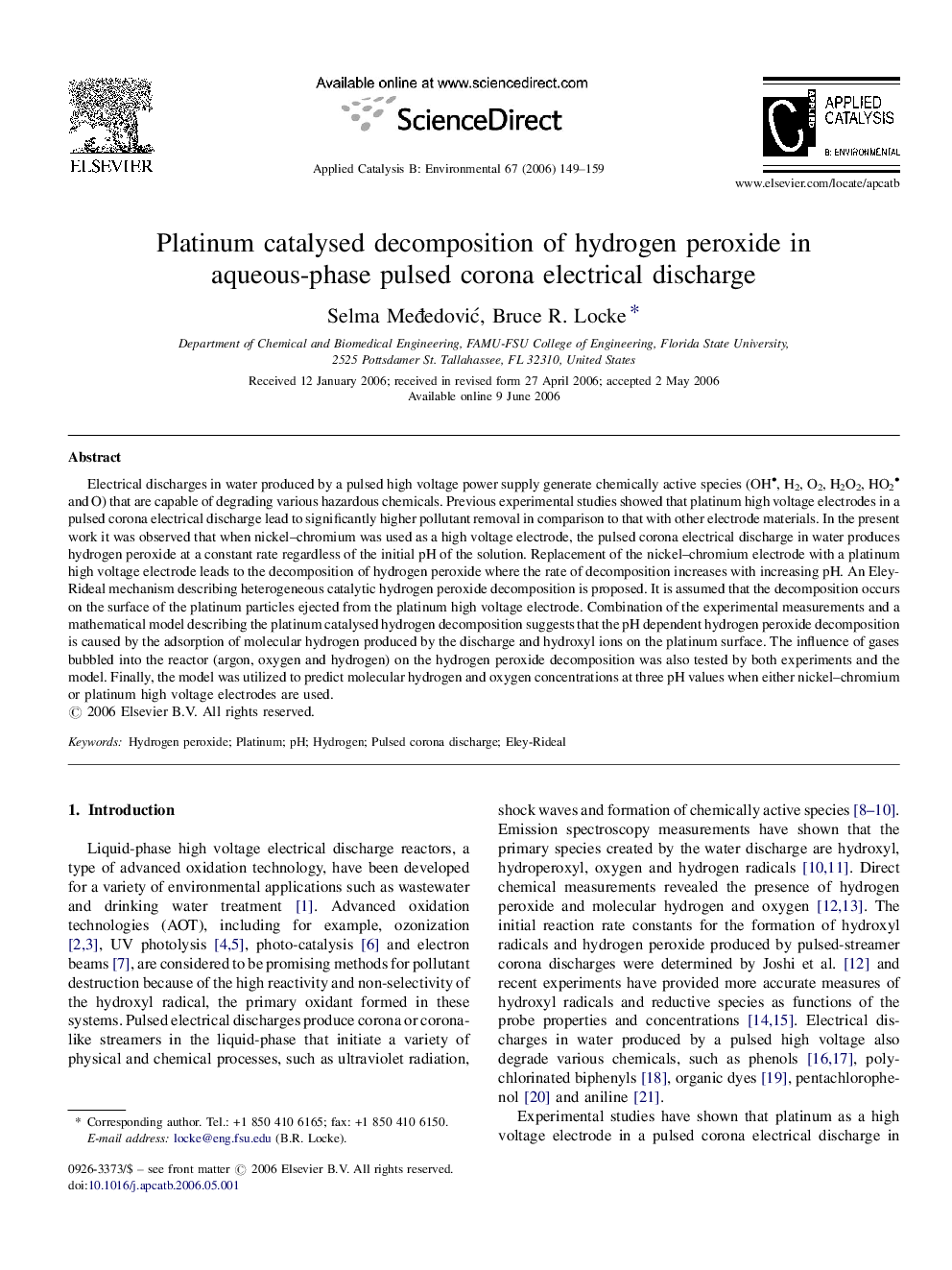| Article ID | Journal | Published Year | Pages | File Type |
|---|---|---|---|---|
| 48856 | Applied Catalysis B: Environmental | 2006 | 11 Pages |
Electrical discharges in water produced by a pulsed high voltage power supply generate chemically active species (OH, H2, O2, H2O2, HO2 and O) that are capable of degrading various hazardous chemicals. Previous experimental studies showed that platinum high voltage electrodes in a pulsed corona electrical discharge lead to significantly higher pollutant removal in comparison to that with other electrode materials. In the present work it was observed that when nickel–chromium was used as a high voltage electrode, the pulsed corona electrical discharge in water produces hydrogen peroxide at a constant rate regardless of the initial pH of the solution. Replacement of the nickel–chromium electrode with a platinum high voltage electrode leads to the decomposition of hydrogen peroxide where the rate of decomposition increases with increasing pH. An Eley-Rideal mechanism describing heterogeneous catalytic hydrogen peroxide decomposition is proposed. It is assumed that the decomposition occurs on the surface of the platinum particles ejected from the platinum high voltage electrode. Combination of the experimental measurements and a mathematical model describing the platinum catalysed hydrogen decomposition suggests that the pH dependent hydrogen peroxide decomposition is caused by the adsorption of molecular hydrogen produced by the discharge and hydroxyl ions on the platinum surface. The influence of gases bubbled into the reactor (argon, oxygen and hydrogen) on the hydrogen peroxide decomposition was also tested by both experiments and the model. Finally, the model was utilized to predict molecular hydrogen and oxygen concentrations at three pH values when either nickel–chromium or platinum high voltage electrodes are used.
